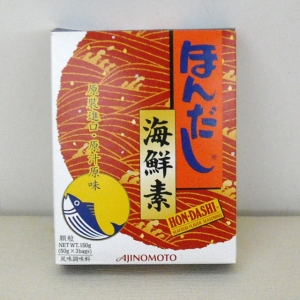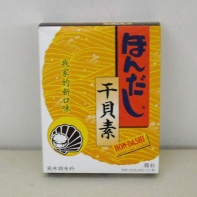(serves 3)
This is a relatively easy way to make an impressive rich chicken stock for Ramen, on par with those in Ramen restaurants. You won’t need to grind bones and slave over the simmering stock for hours, simply by using soy milk as the secret ingredient. A lazy man’s Torikotsu Ramen if you will. The Chicken Chashu and Caramelized Leek used in this recipe give this Ramen its own character.
- Chicken Wings (8)
- Chicken Breast (2 halves)
- Ramen Noodles (3 servings)
- Bacon (3 slices)
- Soy Milk (1.5 cups)
- Eggs (3)
- Leek (1)
- Hon Dashi
- Soya Sauce
- Chicken Stock Cube (1)
- Sesame Oil
- Sesame Seeds
- Coriander Seed Powder
The Night Before
- Rinse the wings, they must be whole, not just the mid-joint. Bring 6 cups of water to a boil in a pot. Place the wings into the boiling water together with 3 slices of bacon.
- Cut the leek into half. It should be at least 1 inch in diameter, or else use more than 1 leek to compensate. Place the top half with the leafy portion into the pot and retain the lower half for later use. Keep the pot on a very low simmer for an hour and then leave covered overnight.
- Brine the 2 pieces of chicken breasts in a solution of 4T salt and 4t soft brown sugar dissolved in 4 cups of cold water. Make sure all the meat is submerged and keep them in the fridge overnight. (refer to the link in the notes below if you haven’t done this before)
- Boil some water in a different pot and place 3 eggs in the boiling water for 7 minutes and then straight into iced water. This is to get the yolks runny but the whites cooked, the so-called Ajitama style egg. Shell the eggs carefully and soak them in a solution of 1T of soya sauce and 0.5t of soft brown sugar in 1 cup of water. Keep them in the fridge overnight as well. (again refer to the link in the notes if you haven’t done this before)
The Next Day
- Bring the chicken stock to a simmer again. Boil until the volume is reduced to about 3 cups. In the meanwhile…
- Rinse the brined chicken breasts thoroughly and marinate in 2T sesame oil, 1t Chinese Wine, 1t coriander seed powder and 2T sesame seeds.
- Take the boiled eggs out of the fridge and allow them to warm to room temperature.
- Julienne the remaining half of the leek. Pan fry the leek in 4T of oil until they are light brown. The leek should continue to darken for a while after your turn off the fire.
- Pour the stock through a strainer to remove any sediment, discard all the solids. Pour the filtered stock back into the pot. Add 1 chicken stock cube, 2t of Hon Dashi and 0.5t of sugar, followed by 1.5 cups of soya milk. Bring to a simmer again.
- Remove and reserve half the crispy leek from the pan for later use as garnishing. Add some of your chicken soup to the pan with the other half of the crispy leek, stir and pour everything back into the soup pot.
- Arrange the sesame seeds in the marinade onto the chicken breasts like a crust. In a toaster oven, cook the chicken breasts for 10 minutes at 150oC followed by another 10 min at 200oC. Alternatively you can roast them for about 13 minutes in a regular oven preheated to 180oC. In either case the chicken is done when it begins to shrink. Check visually to make sure you don’t over cook.
- Allow the breasts to rest and when at room temperature slice them as shown below. Deglaze the baking tray with some of your chicken soup and pour everything back into the soup pot.
- When the soup has been reduced to 3 cups again, skim off any film that has formed on the surface and it is ready for use. Check for taste and add a bit of water or salt as needed; remember that Ramen soup has to be more salty than regular soup.
- Cook the raw noodles in a separate pot of boiling water. Strain the noodles and separate them into 3 large bowls. Add boiling soup and top off with the chicken slices, the crispy leek and the eggs sliced in half.
- If your chicken breast came with the breast bone, cut this out carefully and boil it with the wings. In fact any chicken bones you have on hand can be added to the stock pot. They will increase the gelatin content of your stock.
- Your soya milk should not be of the sweetened variety. It’s the type some people add to their coffee in place of creamer.
- If you are unfamiliar with brining, you can refer to this page (but ignoring the poaching part).
- If you are unfamiliar with making runny yolk eggs, you can refer to this page (but ignoring the optional part).
- Use whatever type of noodles you like but if you want to be authentic and can’t find real raw ramen noodles, you can make ramen noodles out of spaghetti following the procedure from this page.

















 Shouldn’t we use real chicken for the stock? Actually, yes. I usually make my own stock by simmering chicken wings for several hours. Wings (as opposed to, say breast) result in a soup with higher collagen content and better flavour. Using real chicken also allows me to add a porcini stock cube instead of a chicken cube, building even more layers of flavour. But, I didn’t mention any of this in the main recipe as I don’t want to make things overly complicated.
Shouldn’t we use real chicken for the stock? Actually, yes. I usually make my own stock by simmering chicken wings for several hours. Wings (as opposed to, say breast) result in a soup with higher collagen content and better flavour. Using real chicken also allows me to add a porcini stock cube instead of a chicken cube, building even more layers of flavour. But, I didn’t mention any of this in the main recipe as I don’t want to make things overly complicated. 